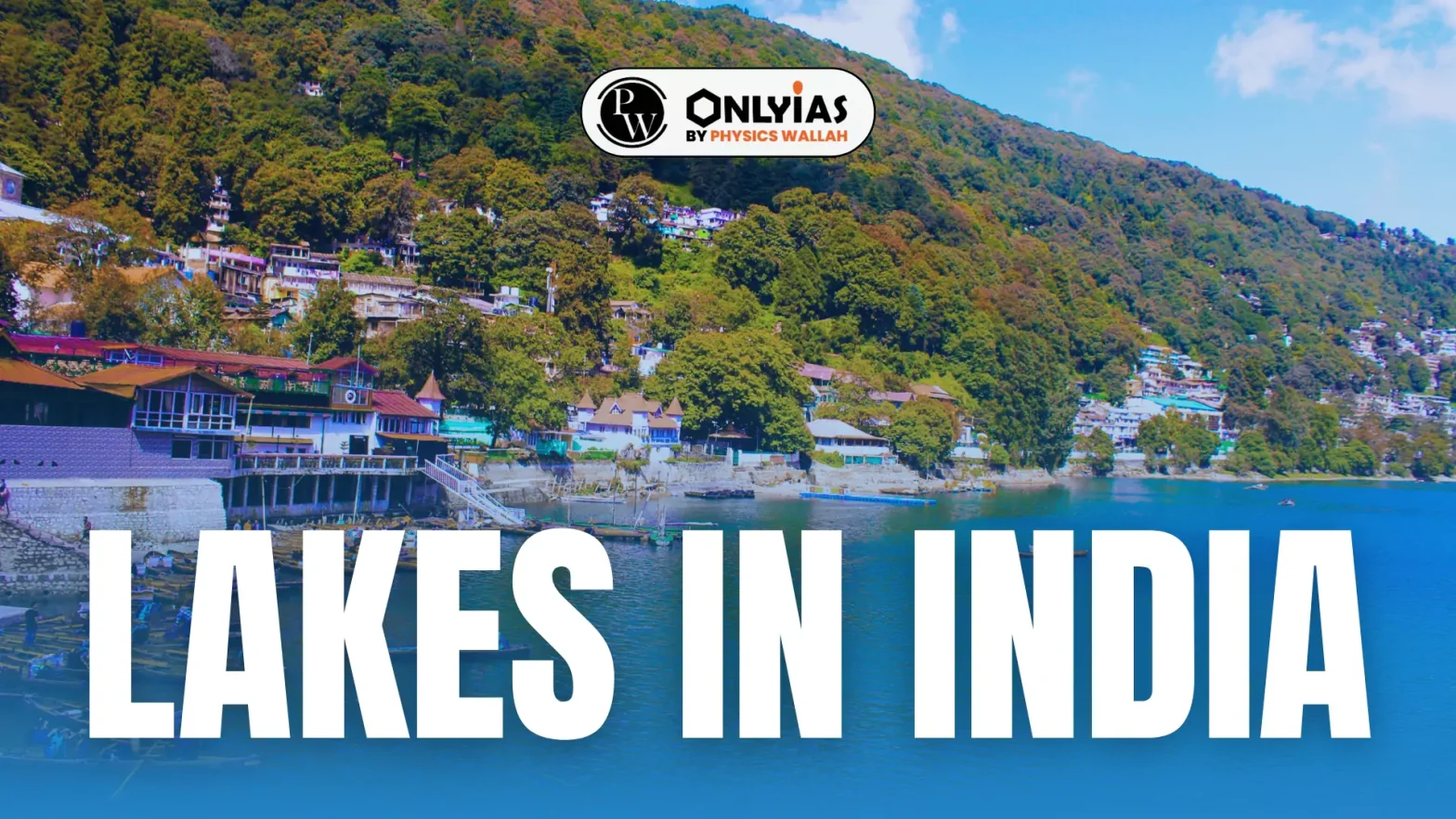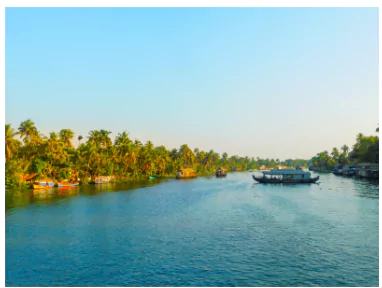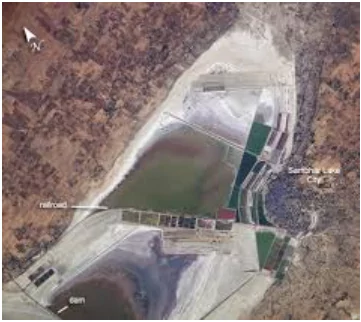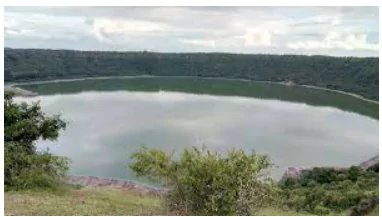Lakes of India List 2025, types, largest ones, freshwater and saltwater lakes, crater lakes, City of Lakes, key facts about famous lakes, and their ecological and cultural importance.

Lakes in India: India is home to a diverse range of lakes, from vast freshwater bodies to saline and brackish water lakes. These lakes not only add to the country’s scenic beauty but also play a crucial role in ecology, agriculture, water conservation, and tourism. Many of these lakes are of historical, cultural, and economic significance, making them important for competitive exams like UPSC and state government exams.
Read on to get an in-depth overview of Lakes in India, including their classifications, the largest lake in India, a state-wise list of lakes, and answers to key questions like which state has the most lakes in India and which city is known as the City of Lakes.
Lakes are an essential part of India’s geographical and ecological landscape. They serve as sources of drinking water, irrigation, hydroelectric power, and biodiversity conservation. India has a variety of lakes, ranging from freshwater to saltwater, natural to artificial, and glacial to crater lakes. These lakes not only support livelihoods but also attract tourism and play a significant role in maintaining environmental balance.
Lakes in India are classified based on their water composition, formation, and origin. The following are the main types of lakes found in the country:
| Category of Lake | Description |
| Freshwater Lakes | Contain fresh water and are primarily used for drinking and irrigation. |
| Saltwater Lakes | Contain saline or brackish water. |
| Natural Lakes | Formed naturally due to tectonic movements, glacial activities, or river meandering. |
| Oxbow Lakes | Formed when a river changes its course and leaves behind a lake in the shape of a crescent. |
| Artificial Lakes | Created by human activities such as dam construction. |
| Crater Lakes | Formed due to volcanic eruptions or meteorite impacts. |
India is home to several large lakes that serve as important ecosystems and water sources. Below is a list of the largest lakes in India, arranged in decreasing order of area:
| Top 10 Largest Lakes in India | ||
| Lake Name | State/UT | Type |
| Vembanad Lake | Kerala | Freshwater |
| Chilika Lake | Odisha | Brackish Water |
| Shivaji Sagar Lake | Maharashtra | Artificial |
| Indira Sagar Lake | Madhya Pradesh | Artificial |
| Pangong Lake | Ladakh | Brackish Water |
| Pulicat Lake | Andhra Pradesh | Brackish Water |
| Sardar Sarovar Lake | Gujarat | Artificial |
| Nagarjuna Sagar Lake | Telangana | Artificial |
| Loktak Lake | Manipur | Freshwater |
| Wular Lake | Jammu & Kashmir | Freshwater |
The largest lake in India is Vembanad Lake, located in Kerala. Covering an area of 2300 sq. km, it stretches across multiple districts and supports fishing, agriculture, and tourism. The lake is known by different names in various regions:

Lakes are spread across different states of India, with each state contributing to the country’s water resources and natural beauty. Below is a state-wise list of important lakes in India:
| State-Wise List of Important Lakes in India | |
| State/UT | Lakes |
| Andhra Pradesh | Pulicat Lake, Kolleru Lake |
| Assam | Haflong Lake, Deepor Beel |
| Bihar | Kanwar Lake |
| Gujarat | Hamirsar Lake, Kankaria Lake |
| Haryana | Badkhal Lake, Brahma Sarovar |
| Himachal Pradesh | Chandra Taal, Maharana Pratap Sagar |
| Jammu & Kashmir | Dal Lake, Wular Lake |
| Karnataka | Agara Lake, Ulsoor Lake |
| Kerala | Vembanad Lake, Sasthamkotta |
| Madhya Pradesh | Bhojtal |
| Maharashtra | Shivsagar |
| Manipur | Loktak Lake |
| Meghalaya | Umiam Lake |
| Mizoram | Tam Dil |
| Odisha | Chilika Lake |
| Punjab | Harike, Kanjli |
| Rajasthan | Sambhar Lake |
| Sikkim | Tsomgo Lake |
| Tamil Nadu | Chembarambakkam, Kaliveli |
| Telangana | Hussain Sagar |
| Uttar Pradesh | Govind Bhallabh Pant Sagar, Belasagar |
| Uttarakhand | Bhimtal |
For a comprehensive understanding of the lakes across different states in India, we have compiled a detailed State-Wise List of Lakes in India in a PDF format. This PDF provides valuable insights into the geographical location, type, and significance of various lakes, making it a useful resource for academic and competitive exam preparation.
| State-Wise List of Lakes in India PDF Download |
| Click Here |
According to the first-ever national waterbody census, Tamil Nadu has the highest number of lakes, with 13,629 identified. The state also ranks fourth in the number of tanks and reservoirs. The state has many irrigation tanks, reservoirs, and natural lakes used for agriculture and the drinking water supply.
India’s “City of Lakes” is Udaipur, located in the state of Rajasthan. This title is well-earned due to its numerous interconnected lakes, which enhance the city’s charm and provide vital water resources.
Saltwater lakes in India are typically found in regions with low rainfall and high evaporation rates. They are essential for salt production and support unique ecosystems. The Sambhar Lake in Rajasthan is the largest inland saltwater lake in India. It plays a critical role in salt production and is also a habitat for migratory birds like flamingos.

Saltwater lakes are formed when water evaporates, leaving behind minerals and salt deposits. These lakes are usually found in arid and semi-arid regions. Here are some of the most famous saltwater lakes:
| Saltwater lakes in India | ||
| Lake Name | State | Significance |
| Sambhar Lake | Rajasthan | The largest inland saltwater lake in India |
| Chilika Lake | Odisha | The largest brackish water lake in India |
| Pulicat Lake | Andhra Pradesh | Second-largest brackish water lake in India |
| Lonar Lake | Maharashtra | Formed by a meteor impact |
The Wular Lake in Jammu and Kashmir is the largest freshwater lake in India, covering an area of approximately 189 sq km. It was formed by tectonic activity and is fed by the Jhelum River. Wular Lake is a significant source of fish and supports a vibrant ecosystem. It also helps regulate the water flow of the Jhelum River, preventing floods.

Lonar Lake in Maharashtra is one of the most fascinating lakes in India. It was created approximately 52,000 years ago when a meteorite struck the Earth’s surface. The lake is a rare example of a hyper-velocity impact crater and has both saline and alkaline water. The Lonar Lake is now a designated National Geo-heritage Monument and attracts geologists and tourists alike.

Lakes in India are not only a source of natural beauty but also offer numerous economic and ecological benefits. Some of the key roles of lakes include:
Lakes in India are an integral part of the country’s geography, culture, and economy. From the vast Vembanad Lake to the meteor-formed Lonar Lake, each water body tells a unique story. Preserving these lakes is essential to maintaining ecological balance and supporting local communities. With increased awareness and conservation efforts, we can ensure that these beautiful lakes continue to thrive for generations to come.
Ready to boost your UPSC 2026 preparation? Join PW’s UPSC online courses today!
Vembanad Lake in Kerala is the largest lake in India, covering an area of 2,033 sq. km. It is a freshwater lake and plays a crucial role in Kerala’s backwater tourism.
Chilika Lake in Odisha is the largest saltwater lake in India. It is a brackish water lagoon and a major habitat for migratory birds.
Tamil Nadu has the highest number of lakes in India, with 13,629 identified lakes, including natural and artificial reservoirs.
Udaipur, Rajasthan, is known as the "City of Lakes" due to its numerous lakes, including Lake Pichola, Fateh Sagar Lake, and Jaisamand Lake.
Lonar Lake in Maharashtra was created by a meteor impact around 52,000 years ago. It is a rare crater lake with both alkaline and saline water.
Wular Lake in Jammu & Kashmir is the largest freshwater lake in India, covering 30 to 260 sq. km, depending on the season.

<div class="new-fform">
</div>